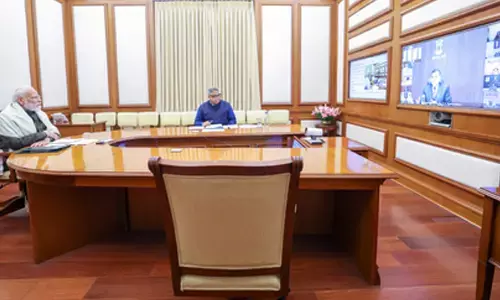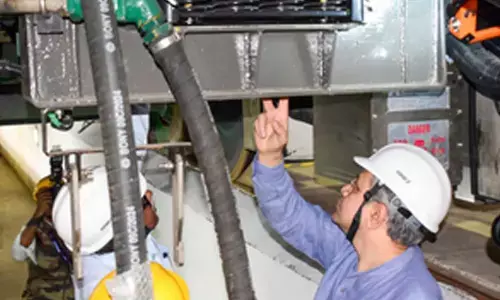From investing Rs 40L, to earning Rs 15cr, meet Kamala Farms owners

Mr. Sandeep Reddy, CSO, Kamala Farms
Hydroponics technology involves growing plants, usually crops, without soil, by using water-based mineral nutrient solution
New Delhi: Agriculture sector in India continues to dominate the employment market since over 50 per cent of the population continues to engage in farming and allied activities. With growing demand for higher crop yield, it becomes critical for the Indian agriculture sector to adapt to modern practices and smarter technologies.
Hans India spoke with Sandeep Reddy, Co-Founder and CSO, Kamala Farms on the silent, yet growing adoption of Hydroponics technology, a method to grow crops with minimum water and zero soil. The National Statistical Office's Situation Assessment of Agricultural Households (SAAH) report for 2018-19, estimates that India's "agricultural households" stands at 93.09 million. With over 90 million population being dependent on agriculture, sustainable farming can pave the way for Indian farmers to grow more crops with minimum natural resources.
Sandeep Reddy and his business partner Meghana Rao envisioned establishing a sustainable agriculture practice in India which can also be equally profitable. Set up in 2017, the company started its journey with a total capital of Rs 40 lakh wherein the duo experimented with hydroponics technology for 6 months to learn its operational capacities and profit viability. In 2018, Kamala farms, a Hyderabad based firm, began selling its soil-less crop to B2B brands such as Zomato's Hyperpure and later to Big Basket.
Hydroponics technology involves growing plants, usually crops, without soil, by using water-based mineral nutrient solution. The sophisticated technology, highly practiced in countries such as Israel, allows a farmer to grow crops in a finite space all year round with minimum usage of pesticides. According to Sandeep, hydroponics can transform the yield capacity of a farm land up to 5 to 7 times. Sandeep also clarified that unlike the general perception of Hydroponics in the market, the technology has the capacity to grow varied crops other than leafy vegetables as well. The entrepreneur has said that at his hydroponic farms, farmers are able to grow vegetables and fruits including capsicum, cucumber, bell peppers, beef steak tomatoes and even watermelon.
The company has now established 35 hydroponic farms in six cities namely Hyderabad, Visakhapatnam, Bangalore, Chennai, Delhi and Pune. The two entrepreneurs are also attempting to grow gourd variant vegetables near hydroponic technology.
Both central and state governments have shown interest in promoting the revolutionary farming technology in India with varied subsidy schemes for the same. The establishment of a hydroponic farm, however, comes at a great cost. Depending on the region and the size of the farm land, setting up a hydroponic chamber may cost upto Rs. 85 lacs to Rs 90 lacs. Government subsidy, depending upon the state, may vary from 30 percent to upto 50 percent.
But the challenges are not only confined to high cost. The other constraints to set up a hydroponic farm may include access to markets or mandis and access to particular components for replacements. Sandeep says that the terms and conditions have changed in the modern times as the manufacturing industry in India holds immense potential.
"Upto 95 percent of the material for hydroponics is available in the Indian market. 60 percent of hydroponics structure consists of galvanised iron which is easily accessible in the country. And so is the poly covering. The Remaining 5 percent of the particular components are sourced from countries like Taiwan. But given the increasing manufacturing capacities, I'm sure we will be able to fill in that 5 percent gap in a few years," Sandeep said.
While in India, the hydroponics market is yet to explore its potential, only a handful of private players exist on the domestic ground. In the western countries such as the US, the technology has existed for over a decade.















